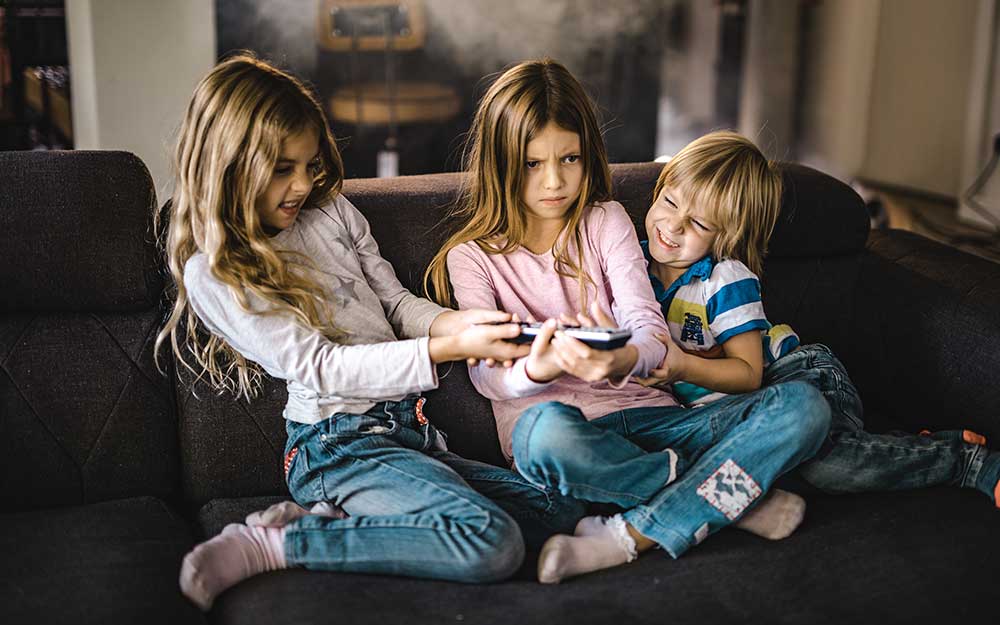Summertime—a season when families typically slow down and focus on making memories together. But this is not a typical summer. Due to the pandemic, families are spending more time sharing the same space than ever before. And with all that togetherness, it can be common for parents to see increased signs of sibling rivalry.
Sibling rivalry, or “conflict between siblings”, is normal and is present to some degree in almost all families,” says Colleen Drosdeck, PsyD, clinical services supervisor for children and adolescents at Rogers Behavioral Health in Kenosha. “Since the pandemic started, families have had more contact with one another, and that means there could be more sibling rivalry.”
What causes sibling rivalry?
Dr. Drosdeck says conflict between siblings can be due to any number of factors, though it usually happens because they’re competing for parental attention, affection, or monetary resources. She advises parents to keep personality differences in mind as well as the developmental age of their children. “Toddlers tend to be very object-oriented and possessive of their belongings. School-aged children are concerned about equity and fairness, while teenagers are focused on individuality and independence,” Dr. Drosdeck says.
She adds sibling rivalry is influenced by many factors like people and life experiences outside the family, gender, genetics, personality, and parental treatment of siblings. “Starting from the age of about fifteen months old, children begin to observe and absorb interactions between parents and other siblings,” says Dr. Drosdeck.
“By the age of three, children have a sophisticated grasp on how to get their needs met in the home and they’ve learned how to interact. Parents need to model how to handle conflict in a healthy way. They can either weaken or strengthen sibling rivalry by showing favoritism. If one child plays soccer and another plays baseball, you can’t go to all the soccer games and none of the baseball games,” she adds.
Dr. Drosdeck says while it can be challenging for parents to deal with, sibling rivalry has its benefits. “It helps children develop important life skills for navigating future relationships with co-workers, roommates, and spouses.”
When to seek help
While sibling rivalry is normal, there are signs that may indicate an underlying mental health concern:
- Conflict and fighting are repetitive and pervasive, occurring most days verses occasionally, and it interrupts normal rhythms in a home, like family dinners.
- A child’s world is getting smaller as social interactions outside the home are diminished due to behavior. For example, a child is not invited to birthday parties, to friends’ homes, or is asked not to
participate in camps or other activities due to ongoing irritability and lashing out at others. - Abnormal responses become normal. The stress we’re all feeling due to the pandemic can cause intense feelings and unusual behaviors,
but they shouldn’t continue after things normalize. - Parents feel like they can’t leave their children home together.
- Violence occurs between siblings, or one expresses fear of another.
Getting help at Rogers
Dr. Drosdeck says giving up addressing ongoing sibling rivalry is not an option, and if you have concerns Rogers can help. “Our programs help children and adolescents develop skill sets they need to regulate their moods, tolerate distress, and improve interpersonal relationships.”
Rogers multidisciplinary teams offer compassionate care nationwide. To request a free, confidential screening, call 800-767-4411 or request one online screening request.


